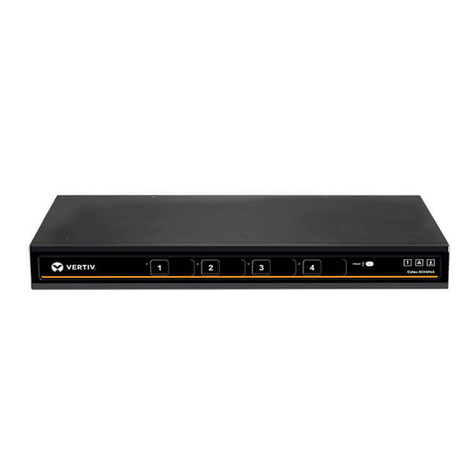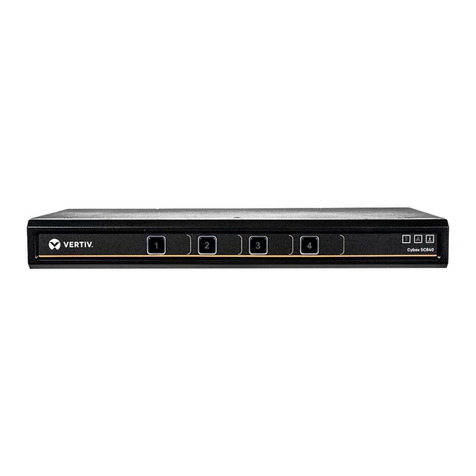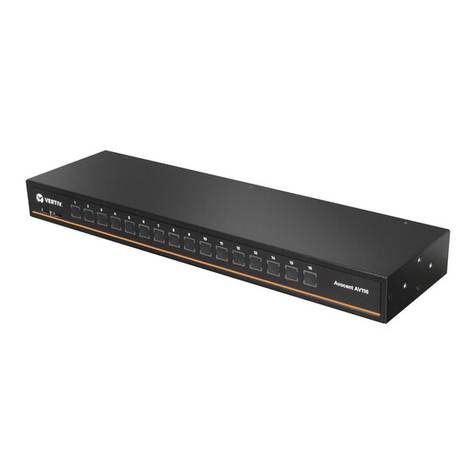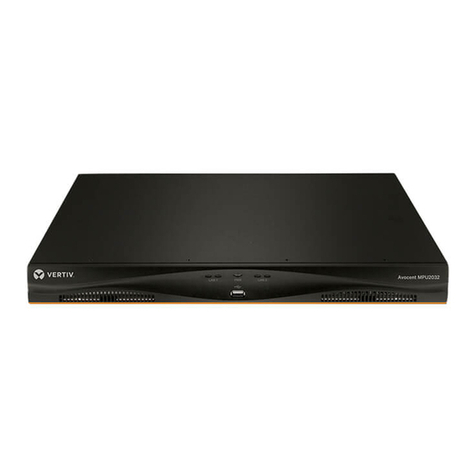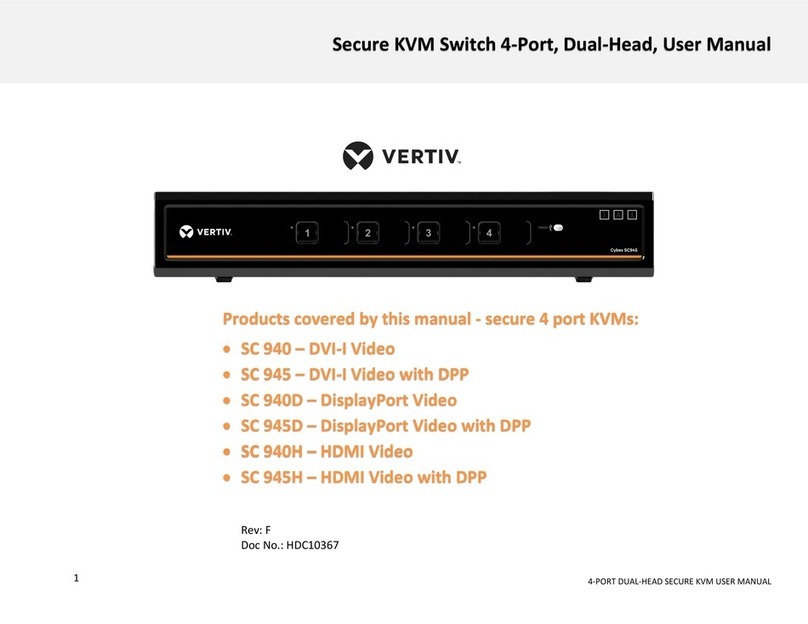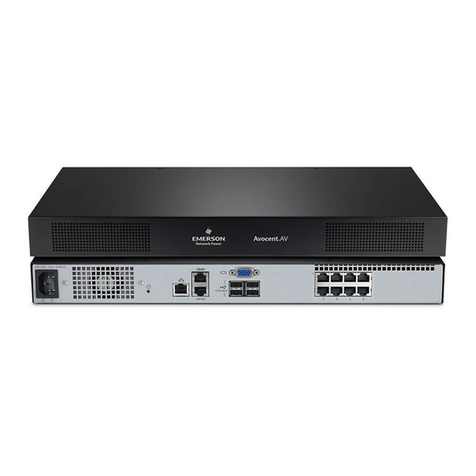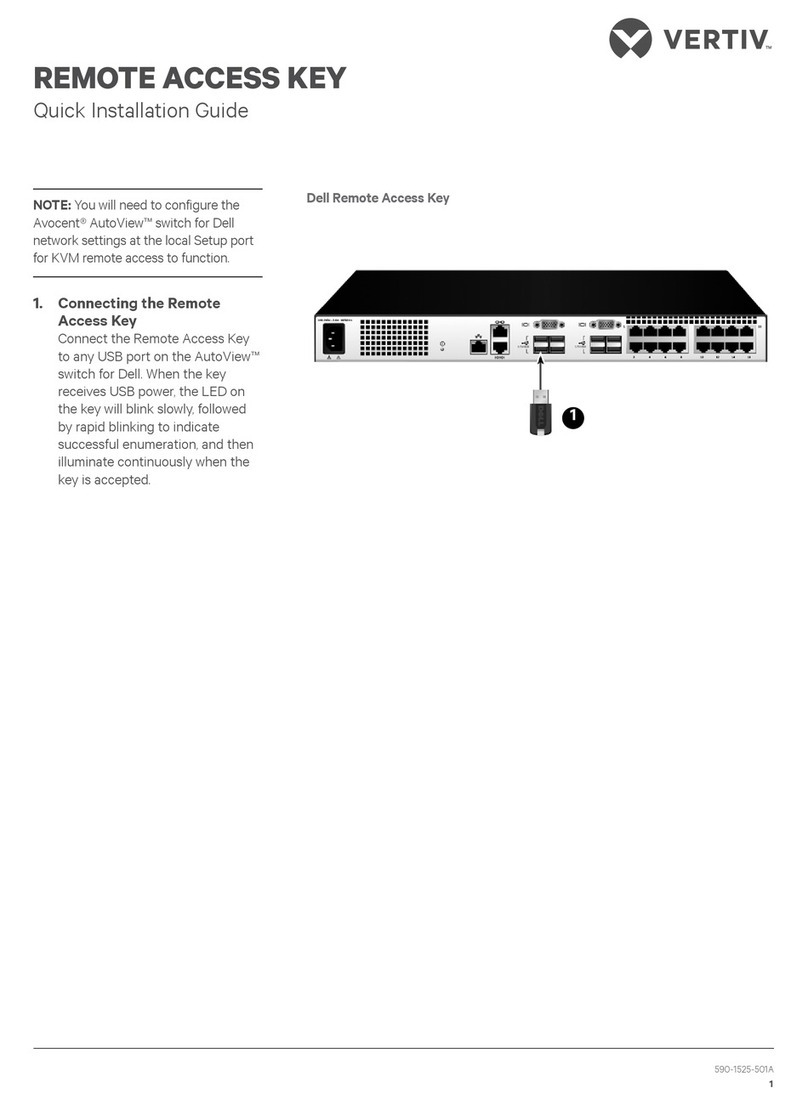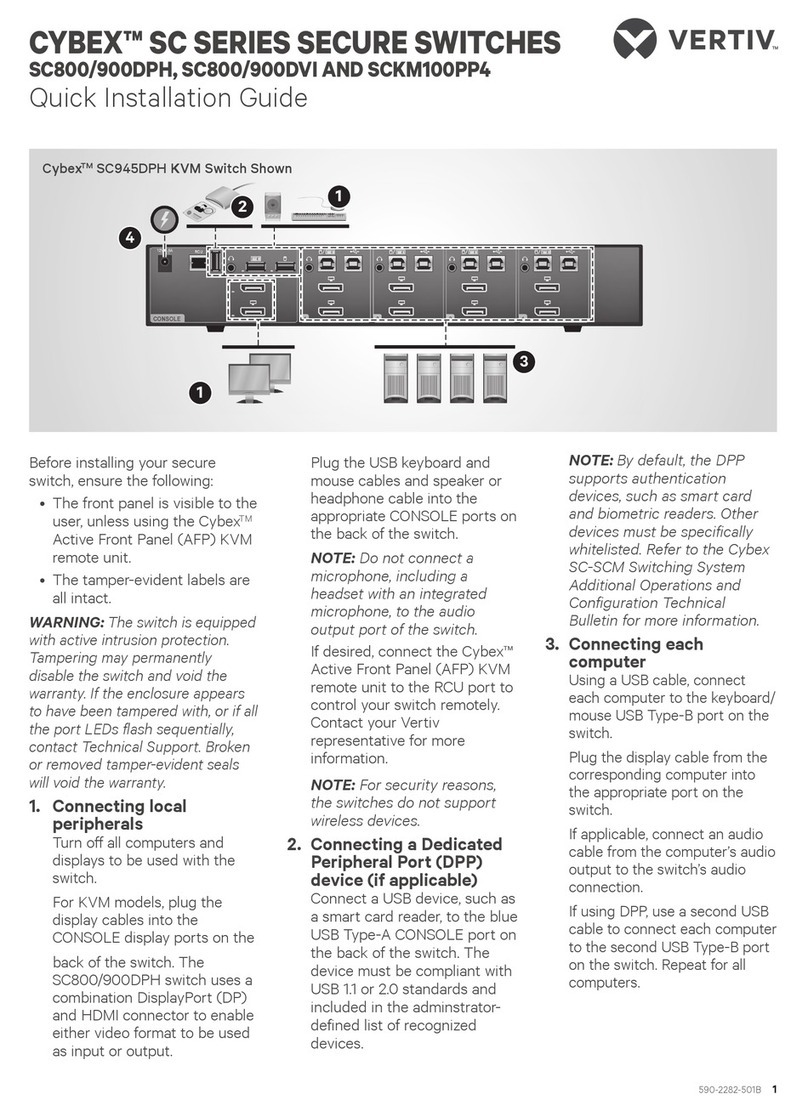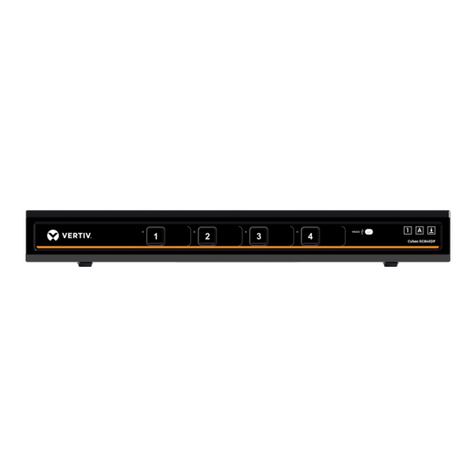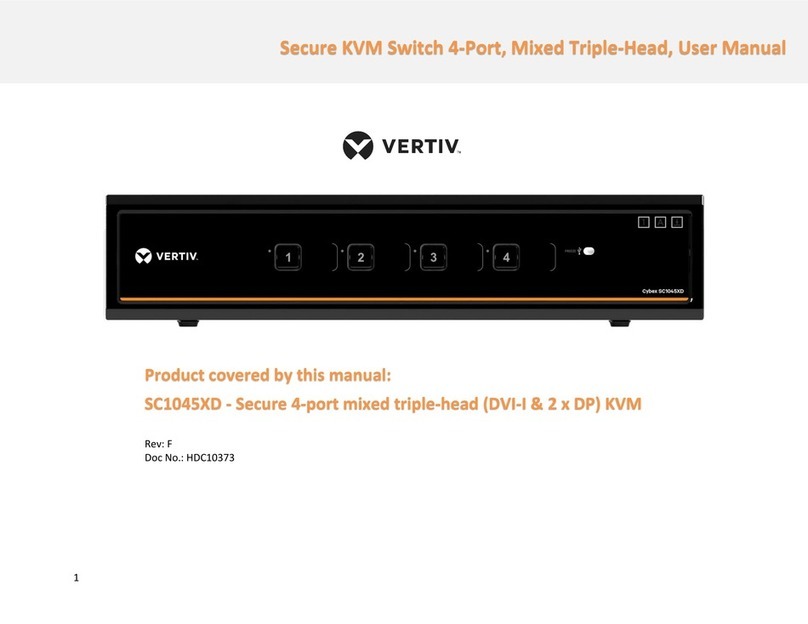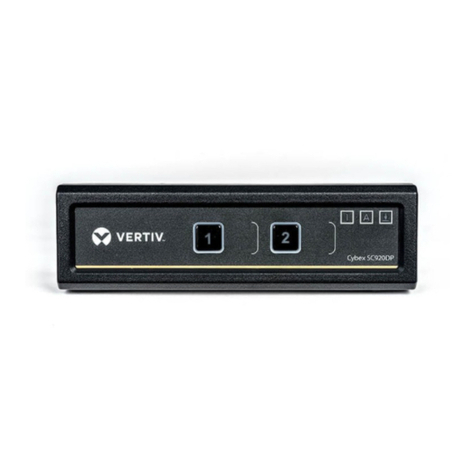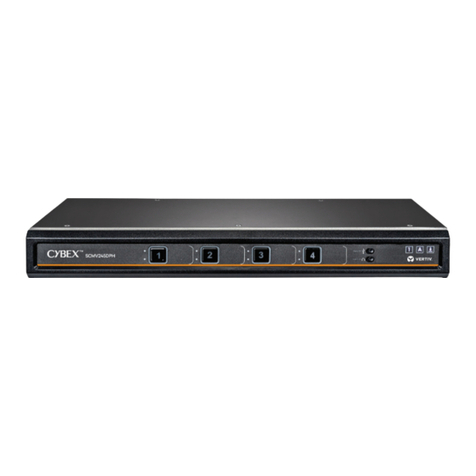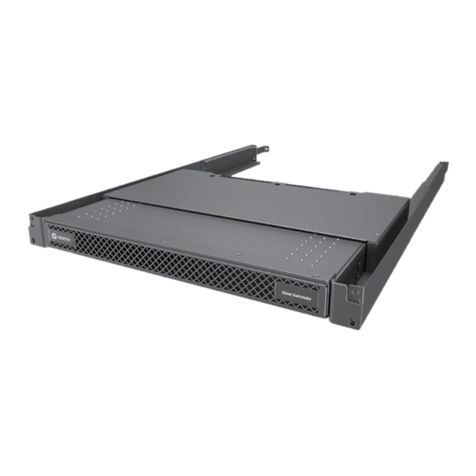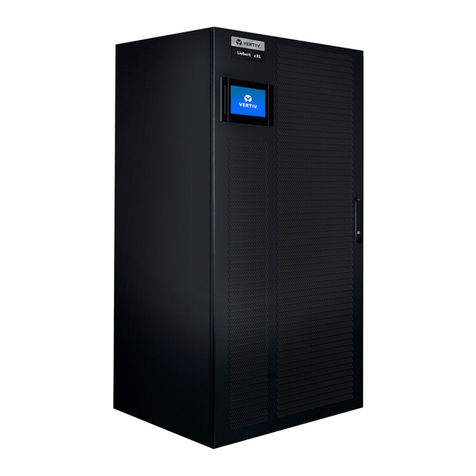
Vertiv™ Liebert® STS2
SL-20610_REV12_09-21 8 Guide Specifications
Proprietary and Confidential © 2021 Vertiv Group Corp.
2.1.6 Grounding
The Vertiv™ Liebert® STS2 shall operate from sources that are solidly grounded or impedance-grounded
(for 480V and below). The unit shall not be used on corner-grounded delta systems.
The AC output neutral shall be electrically isolated from the Liebert® STS2 chassis. The Liebert® STS2
chassis shall have an equipment ground terminal.
2.2 Components
2.2.1 Molded-Case Switches (MCS)
The Liebert® STS2 shall be equipped with five MCSs. The MCSs shall be UL listed and IEC rated for use
at the system voltage. The plug-in feature of the breaker shall include interlock, which prevents the
breaker from being unplugged without being in the Off (open) position. Three of the MCSs shall provide
for total isolation of the solid-state switching devices with an input MCS for each source and a load
isolation MCS. Two of the MCSs shall provide for maintenance bypassing of the solid-state switching
devices to either input source. Key interlocks shall be provided on the MCSs to prevent improper
maintenance bypassing of the solid-state switch. A bypass MCS cannot be closed unless the solid-state
switch is connected to the same input source, and only one bypass MCS can be closed at a time. All MCSs
shall be equipped with N.O. and N.C. auxiliary switches for monitoring of the breaker positions. The two
input MCSs for the solid-state switching devices also shall be equipped with 48 VDC shunt trips to allow
for control by the Liebert® STS2 logic.
2.2.2 Silicon Controlled Rectifiers (SCRs)
The Liebert® STS2 consist of six pairs of SCRs connected in an AC switch configuration. The SCRs shall
be brick-type and rated to carry the full 100% rated load. The SCRs shall be rated to prevent hazardous
device failure in power systems with available fault currents listed under Section 1.4.3, Item I.
2.2.3 Control Panel
The Liebert® STS2 shall be provided with a microprocessor-based Human-Machine Interface (HMI) to
configure and monitor the Liebert® STS2. The HMI shall be located on the front of the unit and can be
operated without opening the hinged front door. The HMI shall not be mounted to the front door so the
door can be easily removed for maintenance. A backlit, menu-driven, full graphics, color touch-screen
Liquid Crystal Display (LCD) shall be used to display system information, status information, a one-line
diagram of the Liebert® STS2, active alarms, alarm history information, startup and bypass instructions.
No mechanical pushbuttons shall be used.
The mimic screen shall indicate the power flow, the status of all MCSs, the preferred source and the
Liebert® STS2 position (connected to source 1 or 2) as well as active alarms.
Pop-up boxes selected from the menu bar shall be provided for operator interface to the HMI for menu
selection, control of the preferred source, manual transfer initiation, auto/manual retransfer selection and
other system setpoints. In addition, an operator can silence and reset the audible alarm by touching the
screen. To facilitate STS operation, help text, step-by-step startup, transfer and maintenance bypass
procedures shall be displayed on the LCD screen. For manual transfers, a syncscope shall display the
leading or lagging real-time phase difference between the two input sources.
The HMI shall be equipped with an internal RS232 port and Flash memory to allow the Liebert® STS2
software to be upgraded by a factory-trained customer engineer without shutting down the load.
To facilitate diagnostics, an event log of the last 512 alarm events shall be stored in non-volatile memory
and displayed on the LCD. Two history logs, each having 64 frames of unit status frozen upon an alarm
condition designated as a freeze fault, will be stored in non-volatile memory and displayable on the LCD.
A frame shall be acquired every 4 milliseconds, with 40 frames before the fault and 23 frames after the
fault. Each frame contains metering data, active alarms/faults and unit status. A system calendar and
real-time clock shall be included to time-stamp all stored events.

